Past CNS Talks

Popularity Trajectories and Substance Use in early Adolescence
James Moody
Abstract: This paper introduces new longitudinal network data from the "Promoting School-Community-University Partnerships to Enhance Resilience" or "PROSPER" peers project. In 28 communities, grade-level sociometric friendship nominations were collected from two cohorts of middle school students as they moved from 6th, to 9th grade. As an illustration and description of these longitudinal network data, this paper describes the school popularity structure, changes in popularity position, and suggests linkages between popularity trajectory and substance use. In the cross-section, we find that the network is consistent with a hierarchical social organization, but exhibits considerable relational change in both particular friends and position at the individual level. We find that both the base level of popularity and the variability of popularity trajectories effect substance use.
Bio: James Moody is professor of sociology at Duke University. He has published extensively in the field of social networks and social theory. His work has focused theoretically on the network foundations of social cohesion and diffusion, with a particular emphasis on building tools and methods for understanding dynamic social networks. He has used network models to help understand school racial segregation, adolescent health, and the development of social science disciplines. Moody's work is funded by the National Science Foundation, the National Institutes of Health and the Robert Wood Johnson Foundation. He is winner of INSNA's (International Network for Social Network Analysis) Freeman Award for scholarly contributions to network analysis and editor of the on-line Journal of Social Structure.

More than a Pretty Picture: Visual Thinking in Network Studies
James Moody
Bio: James Moody is professor of sociology at Duke University. He has published extensively in the field of social networks and social theory. His work has focused theoretically on the network foundations of social cohesion and diffusion, with a particular emphasis on building tools and methods for understanding dynamic social networks. He has used network models to help understand school racial segregation, adolescent health, and the development of social science disciplines. Moody's work is funded by the National Science Foundation, the National Institutes of Health and the Robert Wood Johnson Foundation. He is winner of INSNA's (International Network for Social Network Analysis) Freeman Award for scholarly contributions to network analysis and editor of the on-line Journal of Social Structure.
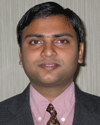
The Global Trade Analysis Project
Badri Narayanan Gopalakrishnan
Abstract: GTAP (Global Trade Analysis Project) is a global network of researchers and policy makers conducting quantitative analysis of international policy issues. GTAP's goal is to improve the quality of quantitative analysis of global economic issues within an economy-wide framework. To accomplish this, GTAP offers data, models, resources, courses, conferences and research projects. GTAP Data Base is a global data base describing bilateral trade patterns, production, consumption and intermediate use of commodities and services. Its latest version has 112 regions and 57 sectors for a base year of 2004. The standard GTAP Model is a multiregion, multisector, computable general equilibrium model, with perfect competition and constant returns to scale. The data and models are continuously evolving with the efforts of the Center for Global Trade Analysis and the ever-expanding GTAP network, since 1993. Resources include the research work of over 8000 GTAP users all over the world, technical papers, working papers, data and model documentation and research memoranda. Short courses and conferences are held every year. In this talk, we will discuss the construction procedures in GTAP Data Base, features of GTAP model and an overview of other GTAP offerings.
Bio: Badri Narayanan Gopalakrishnan has been working at the center on the construction of GTAP database, its documentation, teaching in the courses and conducting research on various economic issues, particularly on international trade and industry-related issues using CGE and econometric models. His other areas of interests include Labour Economics, Productivity Analysis, Demand Analysis and Environmental Economics. He holds a PhD from IGIDR (Indira Gandhi Institute of Development Research), Mumbai. Prior to joining the center, Badri was with ICRIER (Indian Council for Research on International Economic Relations), New Delhi, as a Fellow, where he conducted a field-based study on the Indian Auto Industry for the Government of India and co-ordinated few other research projects in the areas of industry and finance. He was a Teaching Assistant in environmental economics and econometrics to the graduate students at IGIDR and was a part of the IGIDR team involved in some research projects for the Government of India. His Dissertation was on "Some Economic Issues in Indian Textile Sector". Badri also holds a B.Tech. in Textile Technology and has a brief industrial experience as a production manager in a garment export firm in India. He participated in a Meeting with the Nobel Laureates in Economic Sciences in Lindau, Germany in 2004. He was awarded a fellowship by Center for Global Trade Analysis at Purdue University, USA, for participating in a course on GTAP in 2005-06. He has many publications in national and peer-reviewed international journals and books. He has also presented many of his research papers in national and international conferences.
| 4:00 PM | Wells Library 001

Abstract: Open your laptops and demo your software. Bring posters to introduce your research questions and results. Feel free to visit the IV/CNS Open House web site. There will be presentations of research and demos of diverse tools between 4:15p - 5:45p.
Bio:
—Stacy Kowalczyk: e-Science Data Environments: A View from the Lab Floor
—Aretha Alencar: Time-Aware Visualization of Document Collections
—Joseph Cottam: Demo of Stencil: A Declarative, Generative System for Visualizing Dynamic Data
—Michael Conover: Demo of twitter-based political meme detection system Truthy
—Peter A. Hook: Co-Teaching Topic Maps
—Margaret M. Clements, Ph.D. Chaoqun Ni, Kun Duan, Ying Wang, Yuyin Sun: Visualizing The Telecommunications Patent Space: Global Standards and Essential Declarations
—Scholarly Database of 25 million scholarly records, http://sdb.slis.indiana.edu
—VIVO National Researcher Network, http://vivo.slis.indiana.edu
—Network Workbench Tool and Community Wiki, http://nwb.slis.indiana.edu
—Science of Science Tool and Portal, http://sci.slis.indiana.edu
—Epidemics Tool and Marketplace
| 4:00 PM | Wells Library 001

Cognitive Science Colloquium Series
Mark Newman
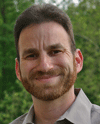
Complex Systems and Complex Representational Practices in Early Elementary Classrooms
Joshua Danish
Abstract: Traditionally, complex systems concepts are not presented to students until middle school at the earliest, with complex systems learning most common at the high school or college level. Yet the ability to understand a complex system from multiple levels of analysis, and to reason about its emergent properties, is of growing importance in science education. Therefore, it is worth asking whether or not complex systems can be taught in intellectually valid ways to children as early as kindergarten in an effort to help them develop early, generative conceptions of complex systems. I will present findings from two studies of the BeeSign simulation software (http://www.joshuadanish.com/beesign) and curriculum that were designed to help young children learn about how honeybees collect nectar from a complex systems perspective. I will also highlight the role of representing students’ developing understanding in the learning process.
The first study took place with 42 kindergarten and first-grade students at a progressive elementary school in Los Angeles. I first present findings that demonstrate that students demonstrated a statistically significant improvement of their understanding of the beehive complex system, using an interview coded for students’ understanding at the structure, behavior, and function level (Danish, 2009). I will then discuss the relationship between different forms of activity in which the students engaged and the different aspects of the content that they discussed. For example, individual drawings appear related to students’ understanding of the honeybee structures, while participatory models helped them link structures to behaviors, and inquiry with the BeeSign software supported students in discussing the honeybee hive from an aggregate level (Danish, 2009; under review).
As students engaged in creating representation of honeybees collecting nectar, their representational practices also changed, leading them to be more constructively critical of their peers’ work. I will summarize findings that detail the changes in students’ representational practices (Danish & Phelps, in press) and also the relationship between different representational contexts and students’ engagement with various aspects of representing (Danish, 2010). For example, students creating individual representations were more likely to focus on the “what” of their drawings while students creating skits would shift to discussions of “how” to represent aspects of their drawings and “why”.
I conclude with a brief discussion of a follow-up study that included 40 first- and second-grade students at a public school in Bloomington Indiana. In this study (Danish, Peppler, Phelps, & Washington, under review) I will highlight student improvement on a test sub-scale related to the aggregate behavior of the honeybee hive, and the role of the BeeSign software in supporting students’ inquiry into this content.
Bio: Joshua Danish is an Assistant Professor in the Learning Sciences program at Indiana University. The overarching theme in his program of research is an examination of how people learn through activity. Learning through activity involves interacting with other people, physical objects, and ideas. Physical objects can range from actual flowers and drawings that label their parts to computer simulations. Similarly, ideas include individual beliefs and preferences, the rules that groups such as classrooms follow, and historically developed concepts that span generations. His research examines how individuals coordinate their actions and ideas within these complex settings, and how this can lead to learning. A major focus of Joshua's work has been examining how young students (5-7 years old) create representations while learning about complex science concepts.
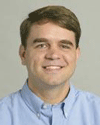
Research Team Integration: What It Is and Why It Matters
Jonathon Cummings
Abstract: Science policy across the world emphasizes the desirability of research teams that can integrate diverse perspectives and expertise into new knowledge, methods, and products. However, integration in research work is not well understood. Based on retrospective interviews with 55 researchers from 52 diverse research projects, I will first present a study in which we categorized teams as co-acting (50%), administratively-integrated (15%), and operationally-integrated (35%). Integration, when it existed, began when PIs chose collaborators and pursued integration throughout the project. I will then describe researchers’ experiences with integration, and research climates that discouraged or encouraged it. Finally, I will note implications for policy choices and design, including changes in team structuring and technology support.
Bio: Jonathon Cummings is an Associate Professor of Management at the Fuqua School of Business, Duke University, and Faculty Director of the Center for Entertainment, Media, and Information Technology (EMIT). After completing his dissertation and post-doc at Carnegie Mellon University, he spent three years at the MIT Sloan School of Management as an Assistant Professor. During graduate school he interned at Intel (studying collaborative software) and at Motorola (studying knowledge management). His current research focuses on social networks and teams in corporations and science, and the role of knowledge sharing in work distributed across different geographic locations. His publications have appeared in journals ranging from Management Science to Research Policy to MIS Quarterly.

Instant-Messaging Networks and the Collective Genius of Profitable Day Traders
Brian Uzzi
Abstract: Synchronicity has been called one of the most pervasive and mysterious drives in nature because it can spontaneously arise without leadership to effectively govern group performance in systems facing uncertainty. To examine the possible role of sync and collective performance in collective human systems, we studied stock trading behavior, which shares basic conditions with animal systems of collaboration and competition that face uncertainty. Analyzing novel, stock trader data on $>1$ million moment-to-moment trades and $>2$ million instant messages, we report on the potential dynamics of human synchronicity and its association with collective performance. First, we find non-trivial synchronous human trading of different stocks across various time scales and alternative null models. Second, sync is positively related to performance but in a non-linear manner -- revealing an elusive property of sync found in some animal systems. Third, sync appears to arise without leadership or conscious coordination. Rather, sync emerges through traders' links to their separate instant messaging networks, which are used to disambiguate market information, and which appear to trigger sync when disambiguated market information is at its more advantageous point between risk and reward. This suggests that sync may have untapped benefits for complex human systems and that vanguard communication technology may furnish new opportunities for achieving collective performance in complex human systems.
Bio: Brian Uzzi is the Richard L. Thomas Distinguished chair in leadership at the Kellogg School of Management, Northwestern University. He also co-directs NICO, the Northwestern Institute in Complex systems and holds professorships in Sociology and in the McCormick School of Engineering. Over the years he has taught around the world and visited on the faculties of INSEAD, University of Chicago, and the University of California at Berkeley where he was the Warren E. and Carol Spieker Professor of Leadership in 2008. His award winning and highly cited research uses social network analysis and complexity theory to understand outstanding human achievement in finance, consulting science, and the arts. He earned his MS in social psychology from Carnegie-Mellon University and a Ph.D. in sociology from The State University of New York at Stony Brook.

The VIVO project: Origins, growth, challenges, and opportunities
Jon Corson-Rikert and Brian Lowe
Abstract: Indiana University researchers Katy Börner and Ying Ding are leading visualization and ontology efforts respectively for the NIH-funded project, “VIVO: Enabling National Networking of Scientists.” The Indiana University Digital Library team lead by Robert McDonald is implementing the VIVO software for the project using data from IUs system of records such as the IU Adress book, Human Resources, and Sponsored Research. In this talk, two of the original developers of VIVO at Cornell University will discuss the creation of VIVO at Cornell, its development as a Semantic Web application, the challenges faced expanding a tool for a single discipline to the scope of a major university and beyond, and the opportunities for VIVO as an open-source project in the increasingly exciting arena of Linked Open Data (http://linkedata.org).
Bio: Jon Corson-Rikert is Head of Information Technology Services at Cornell University’s Mann Library and National Development Coordinator for the VIVO: Enabling National Networking of Scientists project. Jon received a B.A. in Visual Environmental Studies from Harvard University and worked in cartography, land information systems, GIS, and computer graphics before joining Mann Library in 2001. While at Mann Library he has implemented upgrades to the Cornell University Geospatial Information Repository, developed a hosting application for the eClips (http://eclips.cornell.edu) collection of digital video clips on entrepreneurship, business, and leadership, and initiated the VIVO software (http://vivo.cornell.edu) in 2003.
Brian Lowe is the Semantic Applications Team Lead for the VIVO project and a programmer/analyst in Cornell’s Mann Library. A graduate of Cornell University in linguistics, Brian has been a key contributor to the VIVO effort at Cornell and has strongly influenced the transition of VIVO from its original relational database implementation to a full Semantic Web application.

Abstract: Mendeley is social software for academics - as free and cross-platform reference management software Mendeley helps researchers and research groups to work smarter. Usage and article information is then anonymously aggregated on Mendeley Web, enabling researchers to discover real-time usage statistics, articles, and like-minded academics, thus making academic knowledge more transparent and accessible. Mendeley is on track to become the world's largest open research database, and everyone can access this data via Mendeley's API, to freely re-use the data and build applications on top of it. Is this model a new "face of science"?
Bio: Jan is Co-Founder and President of Mendeley, a fast-growing technology start-up that helps people to organize and collaborate on research projects, and that is creating the world's largest open research database. Jan already worked at Internet start-ups during the first dot com era. He studied Business Administration at the WHU Koblenz, the LUISS Rome, and the University of Bath, and graduated in 2004 as MBA with a focus on Electronic Business, Accounting, and Entrepreneurship. Currently, Jan is pursuing a Ph.D. in Information Management at the University of Cologne and spent some time as visiting researcher at the Indian Institute of Management, Bangalore. Previously, he was an advisor to a member of SAP’s supervisory board. He likes languages (especially Italian), Latin music, and sports.

Monitoring Civil Structures using Restricted autoregressive models and Wireless Sensor Networks
Guilherme Rocha
Abstract: Wireless Sensor Networks (WSNs) are a promising technology to detect changes in the state of a structure by monitoring its features such as its natural vibration properties. The natural vibration properties of the structure can be estimated using a multivariate autoregressive model (AR model) of its measured response to ambient vibrations. Fitting a multivariate AR model to the observed data requires the computation of the lagged covariance between measurements in all nodes. The resulting volume of data transmission causes significant latency due to the low data bandwidth of WSNs in addition to having a high transmission energy cost. In this talk, a set of physically motivated restrictions to the estimation of the AR model is presented. Such restrictions significantly reduce the volume of data flowing through the WSN, thus reducing the latency in obtaining modal parameters and extending the battery lifetime of the WSN. The stabilization plots for the restricted and full AR models fitted using data simulated from linear structures are compared. Data collected from a WSN deployed on the Golden Gate Bridge are used to compare the stabilization plots and the estimated modes using the restricted and full AR models. The comparisons show that the restricted form of the AR leads to estimates of the modal parameters of comparable quality to that of the full AR model while substantially reducing the volume of transmitted data.
Bio: Guilherme (G as in goal + Willliam) has a degree in Mechanical Engineering from the University of Sao Paulo in 1999, his M.S. in Economics from the Getulio Vargas Foundation in 2003 and a Ph.D. in Statistics from University of California, Berkeley in 2008. He joined IU as an Assistant Professor in August 2008 and is interested in statistical regularization methods and its applications to high dimensional and dynamical data sets.
| 6:00 PM | Wells Library 001
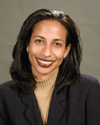
Preferences for International Redistribution
Una Okonkwo Osili
Abstract: In this paper, we study private transfers and preferences toward international redistribution. To our knowledge, this paper is one of the first to investigate households' private transfers and their willingness to support international aid. We develop a model of private transfers where households choose their private contributions towards international aid and support for official development assistance based on their preferences, endowments and official development assistance from government sources. To illuminate the motives for international redistribution, we examine private contributions to international aid organizations using newly available data from the philanthropy supplement to the Panel Study of Income Dynamics (PSID). It is estimated that Americans gave $307.65 billion to charitable organizations in 2008 (Giving USA, 2009) To put the size of charitable donations in perspective, U.S. households gave to charity last year an amount roughly equal to the national incomes of Norway or Indonesia. However, private giving to international causes account for only 4.3 percent of overall charitable giving. According to the PSID, only four percent of all households surveyed have given to an international aid organization.
We investigate factors that can explain private giving to international aid and support for public international aid, we examine the role of individual and community level determinants. One candidate explanation that we explore is the role of one's social environment in influencing attitudes towards households in developing countries. The role of social environment in influencing economic decisions and outcomes has gained increased attention in the social science literature. Our approach is informed by a number of studies that document that exposure to the poor greatly impacts support for domestic redistribution. We examine the hypothesis that recent inflows of immigrants may influence attitudes and preferences towards international redistribution.
Bio: Una O. Osili, Ph.D., is Director of Research at the Center on Philanthropy at Indiana University, a leading academic center dedicated to increasing the understanding of philanthropy and improving its practice worldwide. An internationally recognized expert on philanthropy, Dr. Osili frequently speaks across the country on issues related to national and international trends in philanthropy and has been quoted by national news media outlets such as The New York Times, the Chronicle on Philanthropy and Nonprofit Times. She has served as a member of several national and international advisory groups, including the Social Science Research Council, the United Nations Economic Commission for Africa and the United Nations Development Program. In 2006, she received the Stevenson Fellowship from the Nonprofit Academic Centers Council. In 2007, she was appointed as a fellow of the Networks Financial Institute. Dr. Osili previously served as the Interim Director of Research and has been the Director of Research at the Center on Philanthropy since 2009. Dr. Osili is the current Chair of the Research Committee of the Women’s Philanthropy Institute, and is a member of the Research Committee of the Lake Institute for Faith and Giving. She leads the Center’s extensive research program for its partners including Bank of America, United Way Worldwide, United Student Aid Funds, the Alban Institute, and National Collegiate Athletic Association. Dr. Osili provides guidance for the research for Giving USA, which is published by Giving USA Foundation. She also directs the Center's signature research project, the Center on Philanthropy Panel Study (COPPS). COPPS is largest and most comprehensive study of the philanthropy of American families over time, and is conducted in partnership with the University of Michigan's Panel Study of Income Dynamics (PSID). In addition to her appointment at the Center on Philanthropy, Dr. Osili serves as Associate Professor of Economics and Philanthropic Studies at Indiana University Purdue University, Indianapolis. She is also a member of the graduate school faculty at Indiana University. In 2007, she was a Visiting Associate Professor of Economics at Yale University. Dr. Osili is a consultant with the Federal Reserve Bank of Chicago, and has worked for the World Bank and also serves on the Research Committee of the Association for Research in Nonprofit and Voluntary Organizations (ARNOVA) and the Board of the African Finance and Economics Association (AFEA). She has served as a past or current board member for several nonprofit organizations, including the American Red Cross of Greater Indianapolis, the Immigrant Welcome Center, and is a member of the Board of Trustees of St. Richard’s School. Dr. Osili is a prolific researcher with an extensive body of published research. She earned her B.A. in Economics at Harvard University, and her M.A., and Ph.D. in Economics from Northwestern University.
| 6:00 PM | Wells Library 001

Collaborative Utility-Theoretic Information Retrieval
Paul Thompson
Abstract: The Probability Ranking Principle, which states that documents should be ranked in decreasing order of probability of relevance based on all evidence available to the retrieval system in response to a query, has been served as a foundation for probabilistic information retrieval. Utility-theoretic information retrieval has been proposed, but not developed to the extent which probabilistic retrieval has been. This talk describes the experience with probabilistic information retrieval for single searchers and suggests implications for the development of collaborative utility-theoretic information retrieval. This discussion will use the NIH-funded VIVO and eagle-i projects as examples of how utility-theoretic retrieval might be implemented.
Bio: Paul Thompson received his Ph.D. from the University of California, Berkeley, in 1986. His graduate research was on probabilistic information retrieval. He has worked in the field of information studies for over 25 years. He has published numerous papers, journal articles, and book chapters, and has served as a reviewer for various conferences, journals, and the National Science Foundation. From 1986-1988, he was an assistant professor at Drexel University's College of Information Studies. From 1988-1993, he was a member of PRC, Inc.'s (now part of Northrop Grumman) artificial intelligence development group, where he conducted research in natural language understanding and information retrieval. From 1993 until 2001, he worked for West Publishing Company (now West Group), conducting research on natural language understanding, information retrieval, machine learning / text categorization, and text mining. After joining Dartmouth College's Thayer School of Engineering and Institute for Security Technology Studies in 2001, he continued his earlier research and began new research in the areas of semantic hacking, the application of Semantic Web technology to sensor networks, and question answering. He has also conducted research on control system security in the oil and gas industry with the Institute for Information Infrastructure Protection. He is currently an instructor in the Department of Genetics at the Dartmouth Medical School.
| 6:00 PM | Wells Library 001
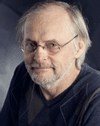
Evolution of Interdisciplinarity (1900-2008)
Yves Gingras
Abstract: Since the beginning of the 1990s, interdisciplinarity has often been promoted as a value in itself assuring either a superior kind of knowledge or a better way to tackle important social problems, viewed as always tresspassing disciplinary boundaries. But beyond the unending debates surrounding the definition of terms, like multi- inter- and trans-disciplinarity, the hard question remains: how can we measure interdisciplinary practices? The obvious way from a bibliometric point of view is of course to look at the pattern of journal citations. Though limited, this indicator at least provides a first empirical measure of the links between disciplines and specialties. Most papers on this topic however have analyzed only the recent period, usually after 1980. Thanks to the existence of the "Century of Science" database of Thomson-Reuters, we can now look at the long-term evolution of interdisciplinarity over a century and see if we can observe patterns. For the domains of the natural sciences and engineering (NSE) the data suggest a movement of opening up of the major disciplines to contributions from other disciplines over the period 1900-1945, followed by reinforcement of disciplinarity between 1945 and 1975, followed again, in the recent period (1975-2008) by a movement towards more interdisicplinarity. In biomedical sciences, the period 1945-1975, saw a followed since then by a continuous rise of interdisciplinarity, that is, a tendency for most disciplines to open up to other disciplines. The talk will discus the data, as well as the link between interdisciplinarity and scientific impact, in more details and suggest possible interpretations of the trends observed.
Bio: After having been trained in physics (B.Sc., M.Sc.) à Université Laval, Yves Gingras obtained a Ph.D. in History and sociopolitics of Science at Université de Montréal. His research interests cover the formation of scientific disciplines, the mathematization of the sciences and the bibliometric analysis of the transformation of the scientific field in the 20th century. He is Scientific director of the Observatory of Science and Technology (OST) at UQAM. Over the last few years, he published papers in Isis, History of Science, Journal of the History of Biology, Social Epistemology, Science and Engineering Ethics, Social Science information, and Journal of the American Society for Information Science and Technology.
| 6:00 PM | Wells Library 001
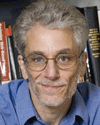
A Universal System for Exploring (and Creating) Time-Based Phenomena
Donald Byrd
Abstract: The world is full of complex temporal (time-based) phenomena, both natural and cultural: to name a few, chemical reactions, animal movement, movies, football games, multimedia shows, weather, operas, political crises, illnesses, wars, development of individuals, development of species, and development of geographic features. These things are always difficult to study or -- for performances of all kinds, whether artistic or athletic -- to create because they don't "sit still", so to speak. The usual answer to this problem is, of course, visualization. But, to my knowledge, every visualization system to date is limited to a specific domain. This is unfortunate because the synergy possible with a more general approach is enormous. Furthermore, presentations in audio and even tactile form can be as useful as visual presentation. I am building a system for exploring any temporal phenomenon via any type of presentation. Initial work has focused on my own field, music, but I'll give examples from other disciplines including nanoscience and biology.
Bio: Donald Byrd studied music composition at Indiana University in the late 1960’s, then became interested in computers and their potential to help musicians. After some years as a programmer and consultant at the University’s academic computing support services, he received a Ph.D. in Computer Science with a dissertation on music notation by computer. Since then, Byrd has worked extensively both in industry and academia. He did sound design and programming for a digital synthesizer company and software engineering for a GIS company, and he led development of the influential music-notation program Nightingale. His academic background includes research on music notation by computer; work on information retrieval in text, especially visualization and human/computer interaction aspects; and work on music information retrieval, digital music libraries, and optical music recognition. Most recently, he has been working on the “General Temporal Workbench”, a timeline-based system for visualizing, exploring, creating, and “playing” (in the sense of playing a recording) any phenomenon that occurs over time, on any timescale from fractions of a femtosecond to billions of years. Dr. Byrd is currently senior scientist and adjunct associate professor in the School of Informatics and Jacobs School of Music at IU Bloomington.
| 6:00 PM | Wells Library 001

Diversity and Network Coherence as Indicators of Interdisciplinarity: Case Studies in Bionanoscience
Alan Porter and Ismael Rafols
Abstract: The multidimensional character and inherent conflict with categorisation of interdisciplinarity makes its mapping and evaluation a challenging task. We propose a conceptual framework that aims to capture interdisciplinarity in the wider sense of knowledge integration, by exploring the concepts of diversity and coherence. Disciplinary diversity indicators are developed to describe the heterogeneity of a bibliometric set viewed from predefined categories, i.e. using a top-down approach that locates the set on the global map of science. Network coherence indicators are constructed to measure the intensity of similarity relations within a bibliometric set, i.e. using a bottom-up approach, which reveals the structural consistency of the publications network. We carry out case studies on individual articles in bionanoscience to illustrate how these two perspectives identify different aspects of interdisciplinarity: disciplinary diversity indicates the largescale breadth of the knowledge base of a publication; network coherence reflects the novelty of its knowledge integration. We suggest that the combination of these two approaches may be useful for comparative studies of emergent scientific and technological fields, where new and controversial categorisations are accompanied by equally contested claims of novelty and interdisciplinarity.
Bio: Alan Porter is Professor Emeritus of Industrial & Systems Engineering, and of Public Policy, at Georgia Tech, where he remains Co-director of the Technology Policy and Assessment Center. He is also Director of R&D for Search Technology, Inc., Norcross, GA. He is author of some 220 articles and books, including Tech Mining (Wiley, 2005). Current research emphasizes research profiling, innovation indicators, science mapping, and forecasting of emerging technology innovation pathways.
Dr. Ismael Rafols is Research Fellow at SPRU (Science and Technology Policy Research), the University of Sussex, one of the world leading centres in innovation studies. He investigates the emergence and governance of hybrid scientific fields, such as bionanotechnology or synthetic biology, relying on expert interviews and bibliometric tools. His recent research focuses on the development of mapping methods to identify areas/topics of knowledge integration.
| 1:30 PM | Wells Library E174
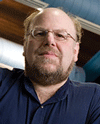
We are the Web: From Semantic Web to Social Machine
Jim Hendler
Abstract: Although the read/write world of Web 2.0 is now commonplace - even your parents use Facebook - the promise of massive scale human computing has barely begun to be exploited. New technologies, including the Semantic Web, mobile computing, and open data suggest ways that far more powerful systems than those we have today could be created, empowering humanity to help address some of our key problems. The potential for the sharing of data and knowledge, among willing participants, makes it possible to envision declarative models for creating and evolving new Web technologies that would more open and distributed systems. Further, by explicating the social, not just the technical, protocols, new models of information control that encourage, rather than prohibit, sharing can be explored. In this talk we explore the potential for next-generation social machines, explore some of the challenges, and look at promising technologies for the future.
Bio: Jim Hendler is the Tetherless World Professor of Computer and Cognitive Science, and the Assistant Dean for Information Technology, at Rensselaer. He is also a faculty affiliate of the Experimenal Multimedia Performing Arts Center (EMPAC), serves as a Director of the international Web Science Research Initiative, and is a visiting Professor at the Institute of Creative Technology at DeMontfort University in Leicester, UK. One of the inventors of the “Semantic Web,” Hendler was the recipient of a 1995 Fulbright Foundation Fellowship, is a member of the US Air Force Science Advisory Board, and is a Fellow of the American Association for Artificial Intelligence and the British Computer Society. He is also the former Chief Scientist of the Information Systems Office at the US Defense Advanced Research Projects Agency (DARPA) and was awarded a US Air Force Exceptional Civilian Service Medal in 2002. He is the Editor-in-Chief emeritus of IEEE Intelligent Systems and is the first computer scientist to serve on the Board of Reviewing Editors for Science.
| 3:30 PM | Wells Library E174

Abstract: Maps of science and technology aim to communicate the results of different types of analyses such as temporal, geospatial, topical, network analysis or modeling efforts to help answer when, where, what, with whom, and why questions respectively. Maps might show different scales such as micro/individual (1-100 records), meso/local (101-10,000 records), or macro/global (10,000 < records). They might be presented as static high resolution printouts on paper or as interactive yet lower resolution applications and services on hand held devises, desktop monitors, or large display walls. This talk will present recent developments in the design of interactive maps of science and technology together with possible future developments involving the semantic web.
Bio: Katy Börner is the Victor H. Yngve Professor of Information Science at the School of Library and Information Science, Adjunct Professor at the School of Informatics and Computing, Adjunct Professor at the Department of Statistics in the College of Arts and Sciences, Core Faculty of Cognitive Science, Research Affiliate of the Biocomplexity Institute, Fellow of the Center for Research on Learning and Technology, Member of the Advanced Visualization Laboratory, and Founding Director of the Cyberinfrastructure for Network Science Center (http://cns.slis.indiana.edu) at Indiana University. She is a curator of the Places & Spaces: Mapping Science exhibit (http://scimaps.org). Her research focuses on the development of data analysis and visualization techniques for information access, understanding, and management. She is particularly interested in the study of the structure and evolution of scientific disciplines; the analysis and visualization of online activity; and the development of cyberinfrastructures for large scale scientific collaboration and computation. She holds a MS in Electrical Engineering from the University of Technology in Leipzig, 1991 and a Ph.D. in Computer Science from the University of Kaiserslautern, 1997.
| 3:30 PM | Wells Library E174
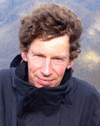
Science in the age of the Web: The end of the scientific paper as we know it
Frank van Harmelen
Abstract: Since the early days of modern science, scientists have been communicating their results in the same way: scientists write their findings down in papers, these are published in journals, which are read and cited by other scientists, who then produce a new batch of papers. And even though we now publish all our papers on the Web, this model has essentially remained unchanged since the 17th century. I will argue that the Web will have a much more profound influence on science. We are on the brink of a very new way of doing science, and of a very new way of reporting about science. I will show how the availability of very large volumes of on-line data is already changing many scientific disciplines, ranging from physics and astronomy to the social sciences and the humanities. And I will argue that in the (near?) future, we will stop publishing papers in the form we have known for centuries and start building an on-line network of claims and counterclaims, of arguments and evidence, in which scientists interactively build a giant on-line network of knowledge.
Bio: Frank van Harmelen (1960) is a professor in Knowledge Representation & Reasoning in the AI department (Faculty of Science) at the Vrije Universiteit Amsterdam. After studying mathematics and computer science in Amsterdam, he moved to the Department of AI in Edinburgh, where he was awarded a PhD in 1989 for his research on meta-level reasoning. While in Edinburgh, he co-developed a logic-based toolkit for expert systems, and worked with Prof. Alan Bundy on proof planning for inductive theorem proving. After his PhD research, he moved back to Amsterdam where he worked from 1990 to 1995 in the SWI Department under Prof. Wielinga, on the use of reflection in expert systems, on the formal underpinnings of the CommonKADS methodology for Knowledge-Based Systems. In 1995 he joined the AI research group at the Vrije Universiteit Amsterdam, where he co-lead the On-To-Knowledge project, on of the first Semantic Web projects. He was appointed full professor in 2002, and is leading the Knowledge Representation and Reasoning Group. He was one of the co-designers of the OWL Web Ontology Language Language. He is currently scientific director the LarKC project (http://www.larkc.eu), aiming to develop the Large Knowledge Collider, a platform for very large scale semantic web reasoning. His interests include: Approximate reasoning, Semantic Web, Medical Protocols.He has published three books (on meta-level inference, on knowledge-based systems, and on the Semantic Web) and over 100 research papers, most of which can be found on-line.
| 3:30 PM | Wells Library E174

Abstract: There are currently several different approaches to semantics, semantic technologies, and the Semantic Web floating around. While the uptake of these technologies is going well, there is still confusion about what sort of technology fits where and how it works. The confusion is made worse because the term "ontology" is used in a number of different ways. In this talk, I will describe how different sorts of models can be used to link data in different ways. I will particularly explore different kinds of Web applications, from Enterprise Data Integration to Web 3.0 startups, the different needs of Web 2.0 and 3.0, and the different kinds of techniques needed for these different approaches.
Bio: Jim Hendler is the Tetherless World Professor of Computer and Cognitive Science, and the Assistant Dean for Information Technology, at Rensselaer. He is also a faculty affiliate of the Experimenal Multimedia Performing Arts Center (EMPAC), serves as a Director of the international Web Science Research Initiative, and is a visiting Professor at the Institute of Creative Technology at DeMontfort University in Leicester, UK. One of the inventors of the “Semantic Web,” Hendler was the recipient of a 1995 Fulbright Foundation Fellowship, is a member of the US Air Force Science Advisory Board, and is a Fellow of the American Association for Artificial Intelligence and the British Computer Society. He is also the former Chief Scientist of the Information Systems Office at the US Defense Advanced Research Projects Agency (DARPA) and was awarded a US Air Force Exceptional Civilian Service Medal in 2002. He is the Editor-in-Chief emeritus of IEEE Intelligent Systems and is the first computer scientist to serve on the Board of Reviewing Editors for Science.
| 6:00 PM | Wells Library 001
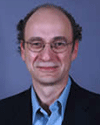
Weighted Reciprocity in a Human Communication Network
David Hachen
Abstract: Weighted reciprocity, the relative balance of interaction flows in a dyad, is an understudied topic in social network research because very few network datasets contain information on the frequency of contact between two people. Using data on the calling patterns of 9 million subscribers of a cellular telephone network over a two month period in 2008, we find that weighted reciprocity has a long-tailed distribution, with most dyads characterized by reciprocity, but a significant minority of dyads being non-reciprocal. We show that variability in the level of reciprocity is related to vertex similarity. Dyads with vertices that are dissimilar in degree (as well as age and physical location) tend to be reciprocal, while dyads with degree similar vertices vary in their reciprocity levels. Among degree-similar dyads, non-reciprocity is greater when the vertices are more dissimilar in their vertex strength, i.e. the extent to which each party makes calls to other people. These findings call into question sociological theories that view reciprocity as an outgrowth of strong ties among similar people. Instead we propose a dynamic model in which tie decay among degree-similar dyads is less sensitive to non-reciprocity. While in general non-reciprocal dyads are less likely to persist than reciprocal ones, some non-reciprocal dyads persist and these dyads tend to be ones in which the vertices are similar. We conclude by speculating about the possible causes of this greater tolerance for non-reciprocity among degree similar dyads.
Bio: David Hachen is Associate Professor of Sociology and Co-Director Inter-Disciplinary Center for Network Science and Applications (iCeNSA) at the University of Notre Dame. His major interest is in social networks, especially dynamic models of their evolution. Through iCeNSA David works with other social scientists, physicists, mathematicians, computer scientists and electrical and civil engineers on a wide range of projects involving networks including the “Longitudinal Analysis and Modeling of Large-Scale Social Networks Based on Cell Phone Records,” the “Open Sourcing the Design of Civil Infrastructure,” and the recently created Social/Cognitive Network Academic Research Center (SCNARC) funded by the Army Research Lab through the Network Science Collaborative Technology Alliance Program.
| 6:00 PM | Wells Library 001

The limited utility of communication for simple organisms
Matthias Scheutz
Abstract: Many forms of signaling have evolved in the animal kingdom for different purposes (including indicating food, signaling danger, and attracting mates). Yet, there are very few species that are capable of "representational signaling" or what we will call "communication". In this talk, we will report results from extensive artificial life simulations that point to the limited benefits communication has for simple agents in biologically inspired foraging tasks and show that communication can even have detrimental effects on performance in certain environments. Using a combination of statistical analyses of simulation results and complexity-theoretic considerations regarding the (computational) cost of components in agent control architectures, we will argue for the limited utility of communication for any kind of simple organism in an evolutionary setting. The upshot of the argument is that simple agents with simple architectures need very special environmental conditions for communication to benefit them and thus to evolve. We will conclude with a few speculative thoughts about what evolutionary pressures might have been at work in cases where communication did evolve.
Bio: Matthias Scheutz received degrees in philosophy (M.A. 1989, Ph.D. 1995) and formal logic (M.S. 1993) from the University of Vienna and in computer engineering (M.S. 1993) from the Vienna University of Technology (1993) in Austria. He also received the joint Ph.D. in cognitive science and computer science from Indiana University in 1999. Matthias is currently an associate professor of informatics and computer science in the School of Informatics and Computing, associate professor of cognitive science in the Cognitive Science Program and adjunct associate professor in the Department of Psychological and Brain Sciences in the College of Arts and Sciences at Indiana University where he also directs the Human-Robot Interaction Laboratory. He has over 100 peer-reviewed publications in artificial intelligence, artificial life, agent-based computing, natural language processing, cognitive modeling, robotics, swarms, human-robot interaction and foundations of computing and cognitive science. His current research and teaching interests include multi-scale agent-based models of social behavior and complex cognitive and affective robots with natural language capabilities for natural human-robot interaction.
| 6:00 PM | Wells Library 001
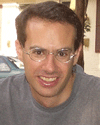
Abstract: This work comprises three interrelated components. The first studies shifts in scientific competitiveness over the course of the 20th century. The second component assesses the importance of knowledge spillovers among innovators. The third component studies changes in the age at which people make important scientific contributions.
Scientific Competitiveness:
1. “Scientific Leadership”: from Europe as a whole and Germany in particular to the US during the 20th Century;
2. An Assessment of British Science over the 20th Century: the consistency of British scientific growth during an “American” Century;
3. “Developing Science: Scientific Performance in the Developing World:” A look at where scientists are being born, where they choose to research, and the parameters that explain why;
4. “Scientific Revolutionaries: Geography, Vintage, and Participation in Scientific Revolutions:” A study of the role played by Geography and vintage in the development and diffusion of quantum physics.
Knowledge Spillovers: How knowledge spillovers among innovators generate innovation.
Age and Innovation: The marked difference over time in the age-creativity relationship, with important contributions coming later in scientific careers.
Bio: Dr. Weinberg's work combines theoretical and empirical interests. Most of his papers develop theoretical models and illustrate their importance empirically. His research also tends to be question-driven rather technique-driven. He tries to use whatever techniques (both theoretical and empirical) are most appropriate for addressing a particular question, and as a consequence employs a broad range of techniques. Much of his research, across the various areas of interest, draws on work in sociology and psychology, incorporating results from these literatures into economic models.
| 6:00 PM | Wells Library 001

Bibliomics, Literature Mining, and Knowledge Discovery
Mathew Palakal & Jake Chen
Abstract: Bibliomics plays an important role in Systems Biology research along with the other “omics” such as genomics, proteomics, metabolomics, etc. Biological literature databases continue to grow rapidly with vital information that is important for conducting sound biomedical research. As data and information space continue to grow exponentially, the need for rapidly surveying the published literature, synthesizing, and discovering the embedded "knowledge" is becoming critical to allow the researchers to conduct "informed" work, avoid repetition, and generate new hypotheses. Knowledge, in this case, is defined as one-to-many and many-to-many relationships among biological entities such as gene, protein, drug, disease, etc. In this talk, we present a literature mining system called BioMAP. The BioMAP tool can carry out large-scale biomedical literature mining that could enhance the ability of biological researchers to formulate methods for the analysis of biological data such as identifying biological pathways and provide support for disease target and new biomarker discovery. Results from a large-scale literature mining on documents related to colon rectal cancer will be presented to illustrate that novel pathways and biomarkers can be found if exhaustive mining is used instead of relying on limited manually curated literature documents.
Bio: Dr. Palakal is currently the Associate Dean for Research and Graduate Program in the School of Informatics and Professor of Computer Science in the School of Science. He is also the Director of Informatics Research Institute where he is leading numerous industry and community related projects. His lab, TiMAP (Text information Mining Analysis and Prediction) is currently focusing on problems related to biomedical and health literature mining to discover domain specific knowledge, see http://regen.cs.iupui.edu/research.





